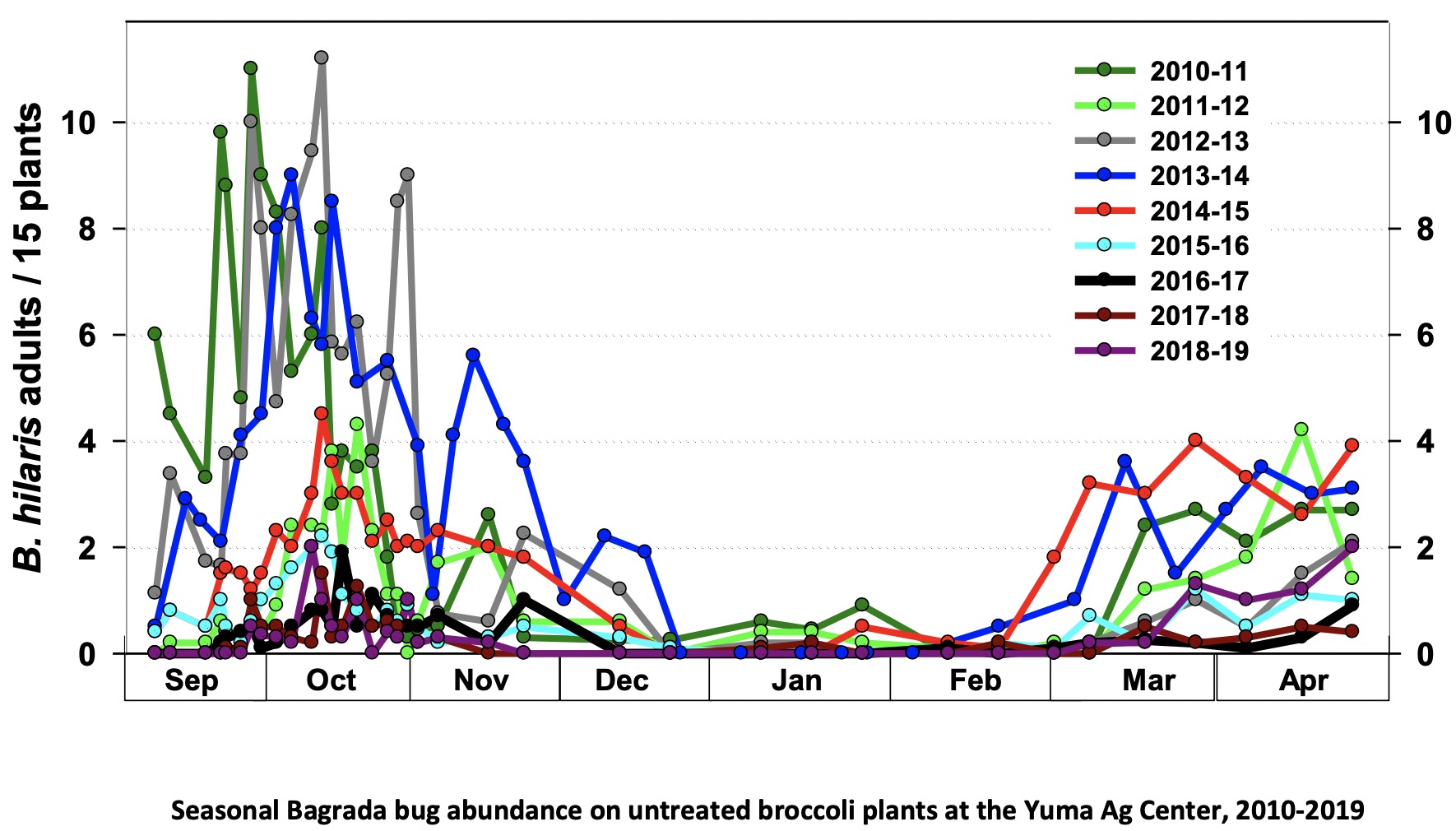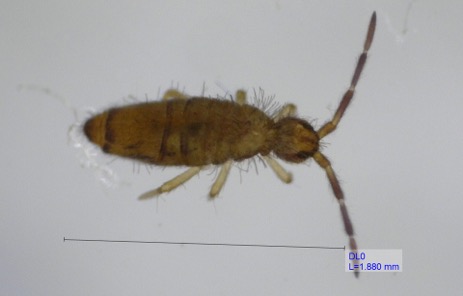In the past few days I’ve observed and received reports from PCAs of key insect pests beginning to show up regularly on Yuma produce. Not surprising given that cabbage and cauliflower transplants have been in the ground now for several weeks, and early-planted broccoli and lettuce stands are established. Here is what I’m hearing and seeing:
Bagrada bug: Starting to show up in light numbers at the Yuma Ag Center (YAC) on broccoli and cauliflower transplants. More than we’ve seen in the past few years. We estimate the population is below threshold, but we have been seeing more adults and damage show up every day. Perhaps more importantly, I’ve had numerous PCA/grower reports over the past week of bagrada bugs found on both transplanted and direct seeded crops throughout the area including Texas Hill, Roll, Wellton, Dome Valley, Gila Valley, Yuma Valley and Bard. Just about everywhere. These are populations that over-summered and are likely coming out of cotton, alfalfa, bermudagrass, Sudan grass and weedy areas. The winter/spring rains that provided abundant mustards and weedy habitats for other plant bugs (e.g., Lygus, false chinch bug) appear to have also benefitted bagrada bugs this summer. So far populations have been relatively light compared to past years but based on previous research (see graph below), this is about the time bagrada begin to appear. The next two weeks will be telling as acreage increases; bagrada generally peak in late Sep and early Oct so keep your eyes peeled for damage and adults on seedling cole crops. This may just be the beginning. More information on bagrada bug management on can be found in: Bagrada Bug Management Tips for the Low Desert 2019.
Lepidopterous Larvae (worms): Right on schedule, beet armyworm larvae are showing up in heavy numbers on 12-day old lettuce. Can easily find egg masses, 1st and 2 instar larvae on seedlings with 1-2 leaves. Similar reports are coming in from PCAs of armyworm on most produce crops. Larvae are said to be heaviest in Dome Valley and Wellton which is consistent with our moth trap catches in these areas. (see Area-wide Insect Trapping Network). Have also had multiple reports of corn earworm showing up on the early produce crops, and this is also reflected from trap catches to date. Cabbage looper larvae have not be observed at YAC, and only one or two reports from PCAs. Trap counts are also low, but still a little early for them.
Diamondback moth: So far, no reports of diamondback moth in transplanted or direct seeded crops in Yuma area. Area-wide trap counts are very low; lowest we’ve seen in the past 3 years at this time (see Area-wide DBM Trapping Network). Lack of monsoon storms may partially explain this. Received a report from Imperial Valley last week of cauliflower transplants arriving from coastal California infested with DBM adults and larvae. If you receive transplants with larvae and adults, you should watch those fields closely and treat accordingly. We recently bioassayed a DBM population collected from Salinas in August that was resistant to Coragen, thus it is advised that you avoid using Coragen for DBM control, particularly on transplants originating from outside the desert. For more information of managing DBM on fall crops see 2019 Guidelines for Diamondback Moth Management in Fall Cole Crops.
Note: Even though the weather forecast is calling for cooler weather with highs around 100 and lows in the 70’s for the next 2 weeks, don’t relax. These average temperatures (~86 °F) are optimal for biological development of bagrada, armyworm, loopers, DBM, flea beetles and whiteflies. Furthermore, these cooler nights will not discourage adult moth flights and egg lays. We’ll have to wait until it gets cooler in October for that to happen.
 Can you ID the insect below?
Can you ID the insect below?

Remember, When in Doubt . . . . . “SCOUT”

|




